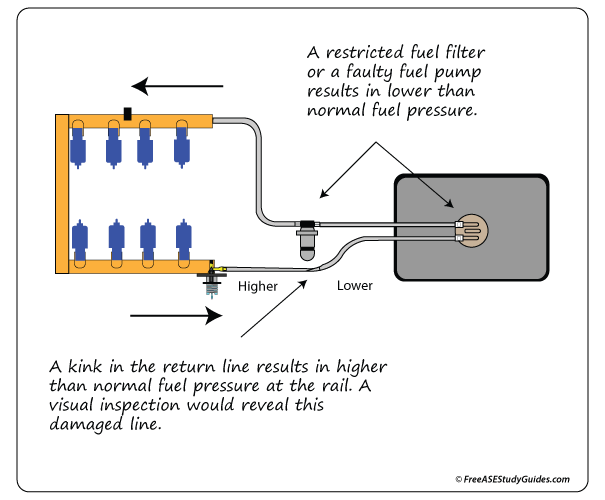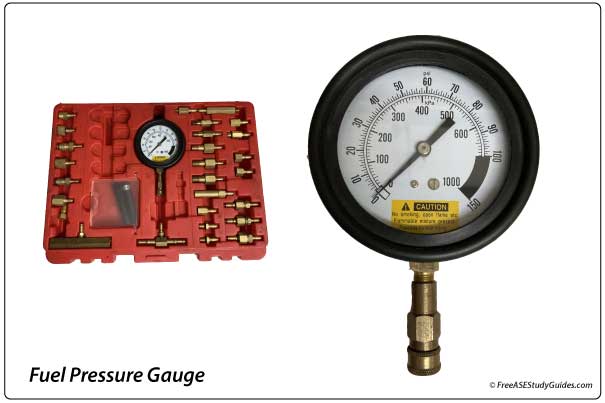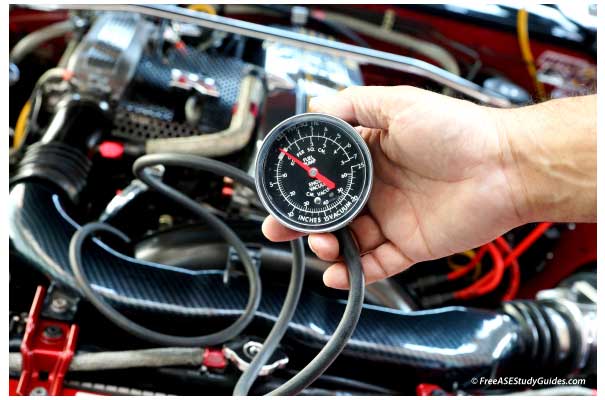Fuel Pressure

A faulty fuel pump or a clogged fuel filter causes low fuel pressure. Proper fuel pressure is vital for engine operation and performance. Low fuel pressure results in a lack of horsepower, stalling, and a slow or no-start condition.

A kink in the fuel return line results in higher than normal fuel pressure at the rail. High fuel pressure results in a rich air-fuel ratio because the increase in pressure forces more fuel through the injectors than required, producing increased emissions (HCs) and black sooty exhaust. These excessive hydrocarbons overheat and damage the catalytic converter.
Fuel Pressure Test

Check the service manual for specifications and use a fuel pressure gauge to check the fuel pressure. The fitting is typically on the fuel rail. If not, a special fitting from a fuel injection kit will be required. After properly installing the gauge, secure it, and turn the ignition key to the on position, it should indicate fuel pressure. Next, start the engine; the fuel pressure should remain the same and increase with a snap of the throttle.
Fuel Pressure Regulator Test

Test a vacuum-operated fuel pressure regulator by removing the vacuum line while monitoring fuel pressure. The pressure should increase (5-15 psi.). A ruptured fuel pressure diaphragm leaks fuel into this vacuum line. Check with the manufacturer's manual for special procedures. Some fuel pressure regulators are electric and controlled by a control module (ECM).